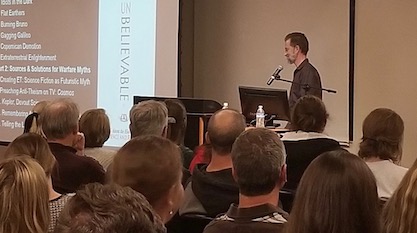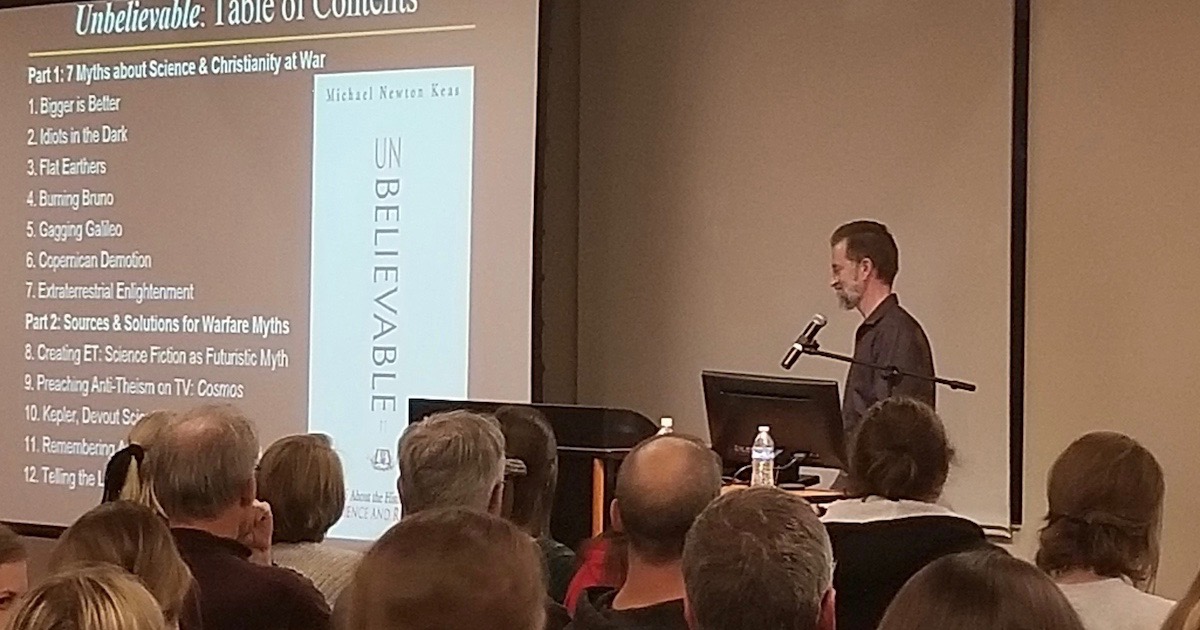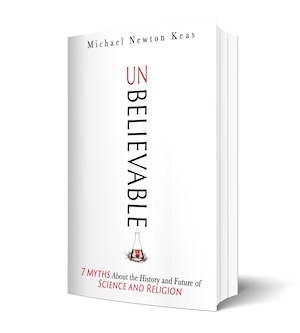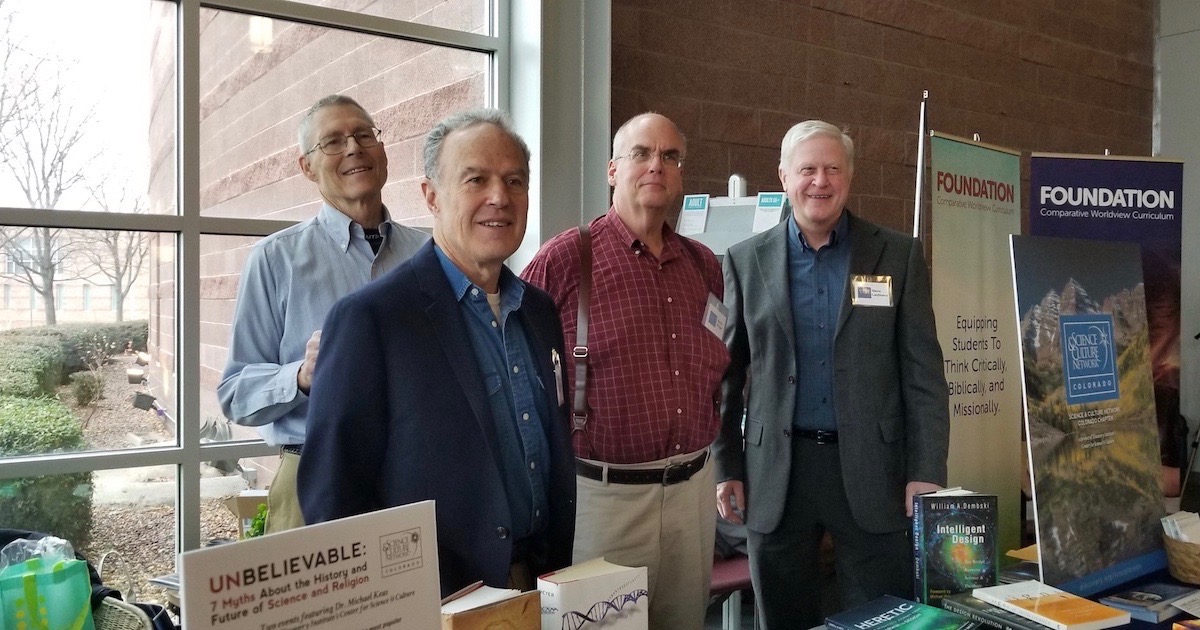 Faith & Science
Faith & Science
 Intelligent Design
Intelligent Design
In Colorado, Two Sneak Previews of Unbelievable


Last week I delivered sneak preview talks on my upcoming book, Unbelievable: 7 Myths About the History and Future of Science and Religion, at Colorado State University and Colorado Christian University. Over 300 people came out to hear me. As one organizer aptly summarized my theme, the book is about “scientists as myth-makers and storytellers.”

My favorite part, as always, were the Q&A opportunities afterward. At the CSU event, sponsored by Ratio Christi, a boy about 13 years old asked about the extraterrestrial (ET) enlightenment myth that I critique in the book. It promises a sort of secular salvation through future contact with ETs, bestowing on humans a higher technological and spiritual experience. The boy wanted to know if this myth helps explain the origin of the other historical anti-religious myths that I analyze.
In fact, as I explained, the chronology and arrow of influence goes in the opposite direction: the historical myth about a Copernican “demotion” of humanity, for example, originated earlier. It helped generate a “significance void” that triggered a search for higher meaning in an expected encounter with superior ET intelligence. The ET enlightenment myth did not appear in astronomy textbooks until long after the other historic myths arose. Nobody on Earth knows whether extraterrestrials exist anywhere in the cosmos, but the futuristic ET enlightenment myth seems to give scientific reasons for why ET is our destined savior. I explained how this story sounds scientific, but isn’t.
Cheers for Homeschooling
I’m glad the boy felt comfortable asking a question in front of undergraduate and graduate students at CSU. I had met his family earlier as people filed into the lecture hall for my talk. They are homeschoolers, as I found from chatting with them. Thanking them for joining us that evening, I told them that many of my best college students over the years have come from a homeschooling background.
A college student, meanwhile, asked me whether aliens helped build the ancient Egyptian pyramids. I told him historians of technology have identified more plausible human techniques for building such structures. My second lecture was at Colorado Christian University. I enjoyed interacting with students and community guests there as well.
Science and Culture Network
None of these good things would have happened without a dedicated support group. I am grateful to the Colorado Chapter of the Science and Culture Network (SCN) for their excellent work in promoting and managing the events. Some of the leaders of the chapter are pictured below.

The Colorado SCN is a local group dedicated to supporting the mission of Discovery Institute’s Center for Science & Culture. Among these amazingly hospitable people is an engineer and a retired airline pilot, and other business-science-technology types. Their knowledge and enthusiasm impressed and encouraged me. Some are quite active in research and writing on intelligent design. I won’t mention names for fear of leaving someone out. However, a SCN member, Jaquidon, snapped this picture and the other above — for which I thank her.
Editor’s note: Unbelievable: 7 Myths About the History and Future of Science and Religion is currently available at a 50 percent pre-publication discount from the publisher, ISI Books. The publication date is January 7, 2019.

